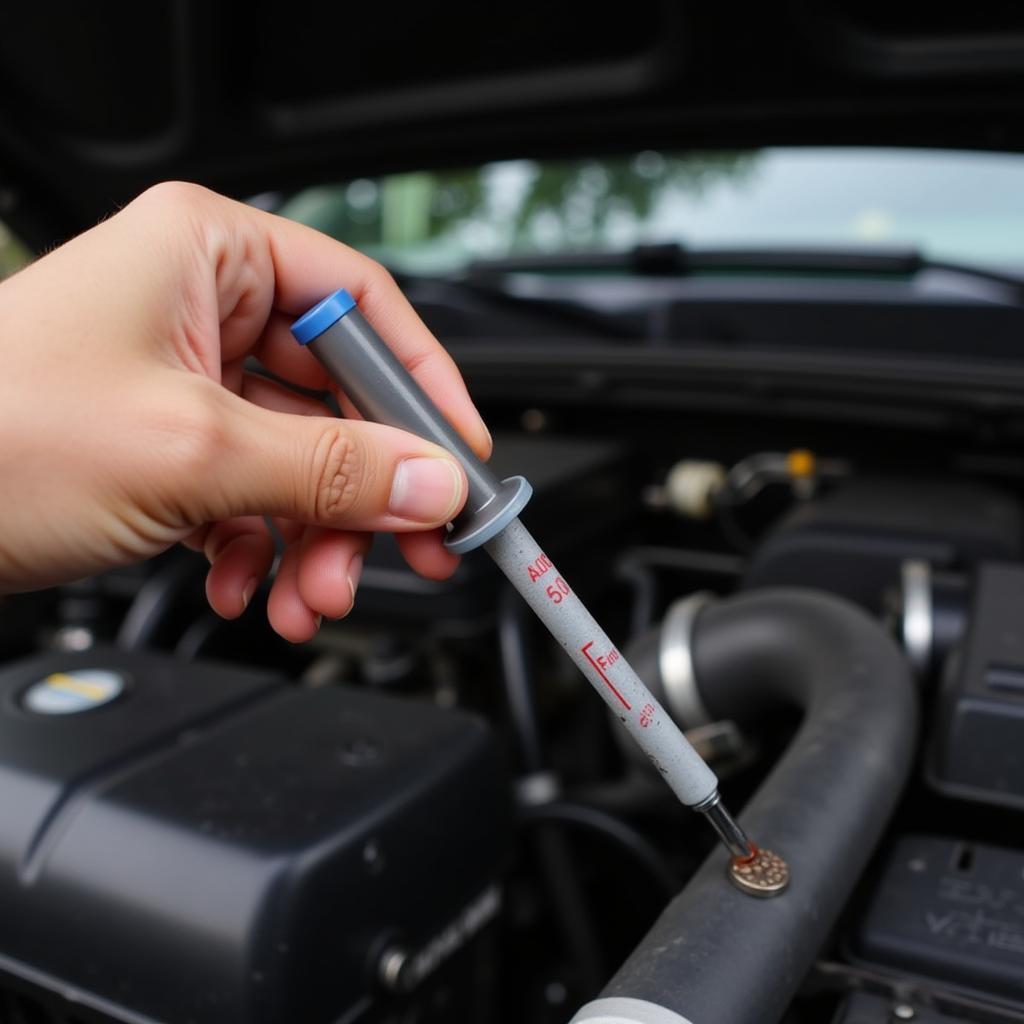Pizza Delivery Car Problems can be a real headache, impacting your income and frustrating your customers. Whether it’s a flat tire, brake issues, or engine trouble, understanding common car problems and how to prevent them is crucial for any delivery driver or pizza business owner. This guide covers everything from routine maintenance to troubleshooting common issues, helping you keep your delivery cars rolling and your pizzas hot.
Common Pizza Delivery Car Problems and Solutions
Delivery drivers put a lot of stress on their vehicles, leading to unique wear and tear. Let’s explore some common issues and their solutions.
Brake Issues: Stopping Power for Safety and Reliability
Brake problems are a serious safety concern. Frequent stops and starts wear down brake pads and rotors faster than average driving. Regular brake inspections are essential.
- Squeaking or Grinding Noises: This often indicates worn brake pads and requires immediate attention.
- Soft Brake Pedal: This could signal a leak in the brake lines or a problem with the master cylinder.
- Pulling to One Side When Braking: This might suggest uneven brake pad wear or a problem with the brake calipers.
Tire Troubles: Keeping Your Delivery on Track
Flat tires are an inconvenient reality for delivery drivers. Potholes, curbs, and debris can cause damage. Regularly checking tire pressure and tread depth is crucial.
- Flat Tires: Carry a spare tire, jack, and lug wrench, and know how to change a tire safely. Consider investing in run-flat tires.
- Uneven Tire Wear: Regular wheel alignments can prevent this issue and extend the life of your tires.
- Low Tire Pressure: Invest in a reliable tire pressure gauge and check your tires weekly.
Engine Problems: The Heart of Your Delivery Operation
Engine problems can be costly and time-consuming. Regular oil changes and tune-ups are crucial for preventing major engine issues.
- Overheating: This could indicate a problem with the cooling system, such as a leak in the radiator or a faulty thermostat.
- Strange Noises: Unusual knocking, ticking, or hissing sounds coming from the engine should be investigated by a mechanic.
- Loss of Power: This could be a sign of a variety of problems, from a clogged air filter to a more serious issue with the fuel system.
Suspension Issues: A Smooth Ride for Your Pizzas
Rough roads and heavy loads can take a toll on your car’s suspension. Regular inspections are necessary to identify potential problems early.
- Bumpy Ride: Worn shocks or struts can lead to a bumpy and uncomfortable ride.
- Squeaking or Clunking Noises: These noises, especially when going over bumps, can indicate worn suspension components.
- Uneven Tire Wear: Suspension problems can also contribute to uneven tire wear.
Preventative Maintenance for Pizza Delivery Cars
Regular maintenance is the key to avoiding costly repairs and downtime.
- Regular Oil Changes: Change your oil every 3,000-5,000 miles, or as recommended by your vehicle’s manufacturer.
- Tire Rotations and Alignments: Rotate your tires every 5,000-7,500 miles and get an alignment at least once a year.
- Brake Inspections: Inspect your brakes every six months or 10,000 miles.
- Cooling System Checks: Regularly check your coolant levels and ensure there are no leaks.
- Air Filter Replacement: Replace your air filter every 12,000-15,000 miles.
“Preventative maintenance is an investment, not an expense. A little time and money upfront can save you a lot of headaches down the road,” says John Smith, Senior Automotive Technician at Smith Auto Repair.
Conclusion
Pizza delivery car problems can be a real obstacle, but with regular maintenance and a proactive approach to addressing issues, you can keep your delivery cars on the road and your business running smoothly. Don’t let car troubles slow you down! Contact AutoTipPro at +1 (641) 206-8880 or visit our office at 500 N St Mary’s St, San Antonio, TX 78205, United States for expert advice and assistance.
“Addressing small problems early can prevent them from becoming big, expensive repairs later,” adds Sarah Jones, Lead Mechanic at Jones Automotive.
FAQ
- How often should I change my oil for a delivery car? Every 3,000-5,000 miles, or as recommended by your vehicle’s manufacturer.
- What are the signs of worn brake pads? Squeaking or grinding noises when braking.
- How can I prevent flat tires? Regularly check tire pressure and tread depth, and avoid potholes and debris.
- What should I do if my car overheats? Pull over immediately and let the engine cool down. Check your coolant levels and contact a mechanic.
- Why is regular maintenance important for pizza delivery cars? It helps prevent costly repairs, reduces downtime, and ensures the safety of your drivers.
- How can I find a reliable mechanic for my delivery car? Ask for recommendations from other delivery drivers or check online reviews.
- What are some common suspension problems? Worn shocks or struts, squeaking or clunking noises, and uneven tire wear.






Leave a Reply